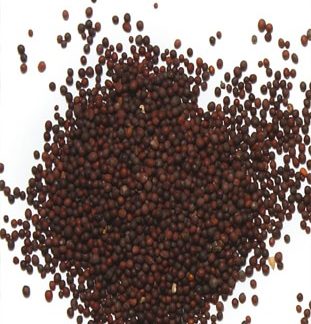MAIZE (CORN)
Maize (Zea mays L. ssp. mays, pronounced /’me?z/; also known in many English-speaking countries as corn), is a grass domesticated by indigenous peoples in Mesoamerica in prehistoric times. The Aztecs and Mayans cultivated it in numerous varieties throughout central and southern Mexico, to cook or grind in a process called Nixtamalization. Later the crop spread through much of the Americas. Between 1250 A.D. and 1700 A.D. nearly the whole continent had gained access to the crop. Any significant or dense populations in the region developed a great trade network based on surplus and varieties of maize crops. After European contact with the Americas in the late 15th and early 16th centuries, explorers and traders carried maize back to Europe and introduced it to other countries through trade. Its ability to grow in distinct climates, and its use were highly valued, thus spreading to the rest of the world.
Maize is the most widely grown crop in the Americas (332 million metric tons annually in the United States alone). Hybrid maize, because of its high-grain yield as a result of heterosis (‘hybrid vigor’), is preferred by farmers over conventional varieties. While some maize varieties grow up to 7 metres (23 ft) tall, most commercially grown maize has been bred for a standardized height of 2.5 metres (8.2 ft). Sweet corn is usually shorter than field-corn varieties.
The kernel of maize has a pericarp of the fruit fused with the seed coat, typical of the grasses, and the entire kernel is often referred to as the seed. The cob is close to a multiple fruit in structure, except that the individual fruits (the kernels) never fuse into a single mass. The grains are about the size of peas, and adhere in regular rows round a white pithy substance, which forms the ear. An ear contains from 200 to 400 kernels, and is from 10–25 centimetres (4–10 inches) in length. They are of various colors: blackish, bluish-gray, purple, green, red, white and yellow. When ground into flour, maize yields more flour, with much less bran, than wheat does. However, it lacks the protein gluten of wheat and, therefore, makes baked goods with poor rising capability and coherence.








